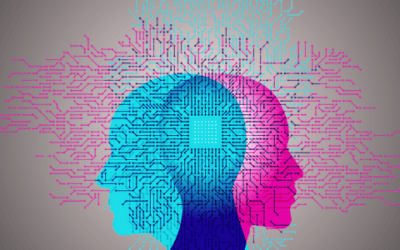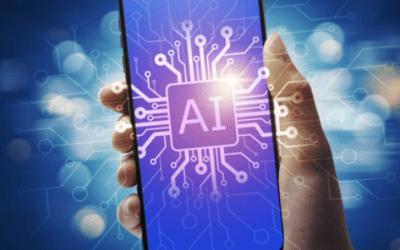
How Consumer Behavior is Changing with AI-Driven Predictive Analytics
Predictive analytics is not a new concept; it has been used in various forms for decades to forecast outcomes based on historical data. However, with the advent of artificial intelligence (AI), predictive analytics capabilities have been exponentially enhanced. AI-driven predictive analytics involves machine learning algorithms, data mining, and statistical techniques to analyze vast amounts of data and predict future trends and behaviors with remarkable accuracy. Hence, it’s a no-brainer why an overwhelming majority (95%) of companies now integrate AI-powered predictive analytics into their marketing strategy, as shown in the Pecan AI’s Predictive Analytics in Marketing Survey report.
At its core, AI-driven predictive analytics works by identifying patterns in consumer behavior from historical data. These patterns are then used to make predictions about future actions. For instance, an online retailer might analyze a customer’s previous purchases, browsing history, and engagement with promotional emails to predict what products they will likely buy next. The AI system continuously learns from new data, refining its predictions to become more precise and reliable.
Enhancing the Consumer Experience
One of the most significant benefits of AI-driven predictive analytics is its ability to enhance the consumer experience. In today’s competitive marketplace, personalization is key to winning and retaining customers. Consumers expect tailored recommendations, relevant offers, and seamless interactions across all touchpoints. AI-driven predictive analytics makes this possible by enabling businesses to anticipate customer needs and deliver personalized experiences at scale.
For example, streaming services like Netflix and Spotify use AI-driven predictive analytics to recommend content based on users’ viewing or listening history. These recommendations are not just random guesses; they are carefully calculated suggestions considering various factors, including genre preferences, viewing times, and mood. As a result, consumers are presented with content that aligns with their tastes, making their experience more enjoyable and engaging.
Similarly, e-commerce platforms use predictive analytics to offer personalized product recommendations. By analyzing a customer’s past purchases, search queries, and even abandoned carts, these platforms can predict what items the customer will likely be interested in. This improves the shopping experience and increases the likelihood of conversions, benefiting both the consumer and the business.
Empowering Informed Decision-Making
Another crucial advantage of AI-driven predictive analytics is its role in empowering consumers to make informed decisions. With the vast amount of information available today, consumers often face the challenge of choice overload. AI-driven predictive analytics helps cut through the noise by presenting consumers with the most relevant information, allowing them to make decisions more efficiently.
For instance, predictive analytics can help consumers manage their finances more effectively in the financial sector. By analyzing spending patterns, income, and other financial behaviors, AI-driven tools can predict future cash flow, identify potential savings opportunities, and even suggest investment strategies. This enables consumers to make proactive decisions that align with their financial goals, ultimately leading to better financial well-being.
In the healthcare industry, predictive analytics is pivotal in helping consumers manage their health. AI-driven tools can predict potential health risks and suggest preventive measures by analyzing medical history, lifestyle factors, and genetic data. This empowers consumers to take control of their health, make informed choices, and seek timely medical intervention when necessary.
Building Trust Through Transparency and Security
While AI-driven predictive analytics offers numerous benefits, it also raises concerns about privacy and data security. Consumers are becoming increasingly aware of the value of their data and are cautious about how it is used. To build trust, businesses must prioritize transparency and data security when implementing AI-driven predictive analytics.
Transparency involves communicating how consumer data is collected, stored, and used. Businesses should ensure that consumers understand the purpose of data collection and how it benefits them. Providing consumers with control over their data, such as opting in or out of specific data uses, further enhances trust.
Data security is equally important. Businesses must implement robust security measures to protect consumer data from breaches and unauthorized access. This includes encryption, secure data storage, and regular security audits. By prioritizing transparency and security, businesses can build trust with consumers and encourage them to engage with AI-driven predictive analytics without fear.
The Future of AI-Driven Predictive Analytics
As AI technology continues to evolve, predictive analytics’ capabilities will only grow stronger. We can expect even more accurate predictions, sophisticated personalization, and broader industry applications. For consumers, this means a future where business interactions are more intuitive, efficient, and satisfying.
Moreover, as AI-driven predictive analytics becomes more accessible, smaller businesses will also be able to leverage its power to compete with larger enterprises. This democratization of AI technology will lead to a more dynamic marketplace, where consumers benefit from innovation and competition. As we move forward, the continued advancement of AI-driven predictive analytics will undoubtedly play a crucial role in shaping the future of consumer interactions, making our lives more connected, convenient, and fulfilling.
If you’d like to learn more, contact me at roger.hurni@lighthousepe.ai or book a time to speak with me.
You may also be interested in
Navigating Economic Shifts Becomes Easier When Businesses Rely on Real-Time Customer Behavior
In today’s economy, where uncertainty is the only constant, agility isn’t just important — it’s essential. But true agility doesn’t happen by accident. It’s built on understanding how people behave in real time, and acting on that insight faster and smarter than the...
AI: Artificial Intelligence or Artificial Interpretation?
AI is not really Artificial Intelligence—it’s more like Artificial Interpretation. Think about it: AI is not sui generis. It doesn’t make up information. Instead, AI finds correlations in seemingly unrelated information and uses those correlations to interpret...
How the Right AI Can Expand the Casino Player Experience
Most casinos aren’t fully embracing AI, and, in turn, they’re missing opportunities to take care of their existing players and outpace their competition. Unrealized potential awaits—from enjoying the benefits of a true attribution channel to delighting players with...
How AI Automation Will Drive Mobile App Marketing Success
As much as we may hate to admit it, our smartphones and the apps on them have become an essential part of our lives. We use them for everything. They help us order food, shop, bank, and be entertained. Consider this fact: Last year, the number of holiday purchases...






